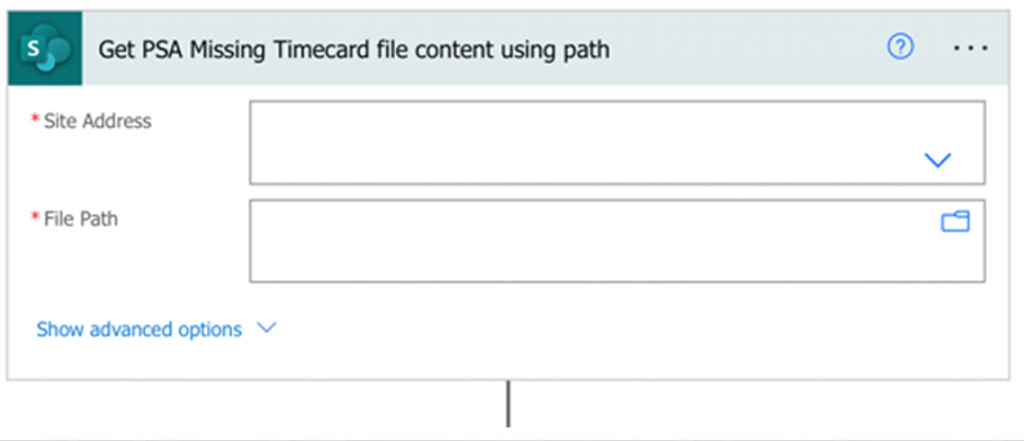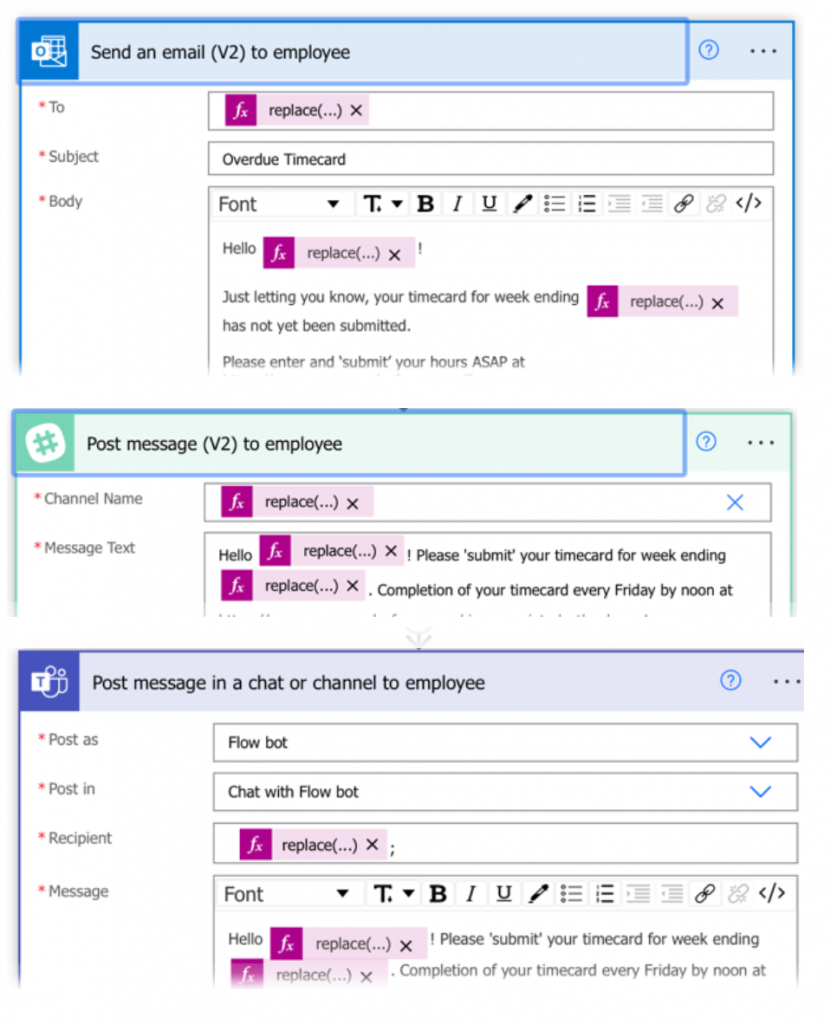How we gave back 2 days of work per week to our administration officer with MS Power Automate

Valerie Sandford
Project Manager
ARQ Group
- April 27, 2022
- 12:16 am
How we gave back 2 days of work per week to our administration officer with MS Power Automate
At ARQ, we are aware of the negative impact that repetitive tasks can have on our employees. It affects their motivation and mental wellbeing. That’s why we strive to reduce repetitive manual processes wherever possible.
We decided to experiment with Microsoft Power Automate to improve our internal processes, and timesheet reminders appeared to be a perfect use case for us. In this post we will explain how we automated our timesheet reminders with Microsoft Power Automate.
As in many companies, employees must submit their timesheets at the end of each week. For us, a timesheet records the number of hours worked on each project, client, and any leave taken. But a number of us forget to submit our timesheets, and our administration officer sends hundreds of Slack, Microsoft Teams, and emails messages each week to employees and their managers to remind them to submit their timesheets. Our objective was to automate these reminders with Microsoft Power Automate and save valuable time for our administration officer and employees.
The first step was to read a Salesforce report that lists all missing timesheets. It appears that it was easier to read data from Sharepoint than directly from Salesforce, so we automatically exported the report into Sharepoint instead.
To do this, we subscribed to this report twice a week from Salesforce. This allowed us to receive an email containing CSV data regularly during the week. Microsoft Power Automate’s integration with Outlook allowed us to read these emails and copy any attachments into Sharepoint. We could then access any Sharepoint file using the site address and file path:

The next step was to read each line of the CSV report. The reason we chose to export the report into CSV instead of Excel, was that Power Automate requires the Excel file to have data organized into Tables. We tried to create some tables via Power Automate but we faced other issues (the file got blocked or we couldn’t retrieve the last updated data). However, reading a CSV file required writing a small amount of code. This step could be daunting for users who are non-developers, which Power Automate clearly targets. Better support for this use-case in the future would help keep Power Automate apps as low-code as possible.

The third step was to send missing timesheet reminders to the employee. For each missing timecard we were able to send email, Slack, or Microsoft Teams reminders. In order to send Slack messages, we needed to ensure that a slack username format (`firstname.lastname`) was consistently applied across the company.

The last and final step was to send reminders to an employee’s manager. If your Office365 employee profiles are up to date, Power Automate allows you to retrieve the user profile which includes details of their manager.

Although, we faced a few challenges along the way, this experiment with Microsoft Power Automate successfully allowed us to automate timesheet reminders across the company. Each week more than 200 emails, Slack and Microsoft Teams reminders are sent automatically to employees and managers. It gave back 2 days of works per week to our administration officer who can now focus on what really brings value to the company.
We enjoyed Power Automate’s tight integration with Office365 user profiles, Outlook, Sharepoint, and Microsoft Teams. It also helped highlight areas across the company where we needed to ensure our data was up to date.

If you wish to know more about how we automated this process using Microsoft Power Automate, feel free to contact us at emerging.technologies@arq.group
More to explore

Digital Twins: Helping Your Home and Bamboo Reach Their Full Potential
From smart homes to Smart Cities, discover the hidden potential of Digital Twin technology. Welcome to an exciting journey into the world

6 FinOps Trends and Predictions for 2023
The words ‘cloud cost optimisation’ may be enough to make any CFO and CIO’s heart skip a beat in a world where

How we created our immersive metaverse experience
How do you bring together a geographically distributed workforce across the world for a major corporate event? Metaverse – the latest buzzword

